How to Read Chinese Poetry Workbook
How to Read Chinese Poetry Workbook
Jie Cui and Zong-qi Cai
Columbia University Press

New York
Columbia University Press
Publishers Since 1893
New York Chichester, West Sussex
cup.columbia.edu
Copyright 2012 Columbia University Press
All rights reserved
E-ISBN 978-0-231-52722-4
The Library of Congress has catalogued Zong-qi Cai, How to Read Chinese Poetry: A Guided
Anthology as follows:
How to read Chinese poetry: a guided anthology / edited by Zong-qi Cai.
p. cm.
Chinese and English.
Includes bibliographical references and index.
ISBN 978-0-231-13940-3 (cloth : alk. paper)
ISBN 978-0-231-13941-0 (paper : alk. paper)
ISBN 978-0-231-51188-9 (electronic)
1. Chinese poetryHistory and criticism. 2. Chinese poetryTranslations into English. I. Cai, Zong-qi. II. Title.
PL2308.H65 2007
895.1'1009dc22
2007023263
Jie Cui and Zong-qi Cai, How to Read Chinese Poetry Workbook:
ISBN 978-0-231-15658-5 (paper : alk. paper)
ISBN 978-0-231-52722-4 (electronic)
A Columbia University Press E-book.
CUP would be pleased to hear about your reading experience with this e-book at .
Table of Contents
We would like to dedicate this book to the enthusiastic readers of How to Read Chinese Poetry: A Guided Anthology, edited by Zong-qi Cai (Columbia, 2008; hereafter HTRCP). To them we are greatly indebted for the original conception of this book and for their continual feedback and encouragement.
In the fall of 2009, Philip Merrill, a professional writer working in the recording industry and an aficionado of Chinese poetry and language, sent a kind thank-you note to the editor of HTRCP in which he expressed his hope for a special workbook for learners of Chinese at advanced beginning or higher levels. When his suggestion was passed on to the Press, it won quick approval. So we embarked upon a new adventure: to produce a book that integrates the learning of Chinese language and poetry in ways not previously attempted in the English-speaking world.
In preparing this book, we have retained and improved on various popular features of HTRCP, and have introduced a number of new features aimed at enhancing language training and literary comprehension.
Each of the 100 selected poems (as well as the accompanying prose translations) is presented in simplified characters. The use of simplified Chinese characters is an imperfect but practical choice. No one doubts that, for historical and aesthetic reasons, classical Chinese poems are best presented in traditional, unsimplified Chinese. However, in a book primarily for learners of Chinese, demographic and pedagogical considerations outweigh other concerns. Simplified characters are now used in China by hundreds of millions in teaching and studying classical Chinese poetry, and have been adopted in most Chinese language textbooks. Given this, we cannot but follow the general practice. But to mitigate an imperfect choice, we have also provided unsimplified characters for all the simplified characters explained in the vocabulary notes.
The presentation of each poem and its prose translation is followed by copious vocabulary notes. A total of 634 characters and 397 compounds from the poems are explained in the vocabulary notes, with 427 modern Chinese equivalents (including 378 compounds) given in tandem. A large number of sample sentences are included to illustrate the idiomatic usage of these modern Chinese characters and compounds. A complete list of characters is provided at the end of the book, which contains extensive cross-references between classical and modern Chinese usage, between characters and compounds, and between multiple meanings of the same character.
There is one exercise unit for every five units of poetry, which provides extensive drills on modern Chinese words, phrases, and syntax. The drills both enhance readers ability to read classical Chinese and test their understanding of the poems studied. An answer key can be found in the end matter.
Each of the 100 poems is given tone-marked romamzation, accompanied by sound recording for the poem as well as its prose translation. Sound recording can be accessed and downloaded free of charge at cup.columbia.edu/static/cai-sound-files-wkbk. All the Entering-Tone characters used in the recent-style poetry and lyric songs are clearly marked, with their phonetic transcriptions given in the end matter. Also clearly marked is the use of rhymes. Different markers are used to distinguish between the level-tone rhyme and the oblique-tone rhyme and to differentiate multiple rhymes used in a single poem.
To turn rigorous language learning into a pleasurable literary experience, we have taken pains to provide as much literary aid as possible. The comprehension and appreciation of the poems is aided by notes on their historical and cultural contexts and by comments and questions about their unique artistic features, with extensive references to more in-depth discussion in HTRCP. All famous, oft-quoted poetic lines are accentuated by shading and should be learnt by heart.
We hope that readers will not only learn to appreciate the beauty of individual poems but also gain a broad view of the entire Chinese poetic tradition. For this reason, we have selected 100 of the best-known, oft-recited classical Chinese poems. These poems are representative of the major poetic genres developed from their inception through the Yuan Dynasty, and are organized into twenty units around the most popular themes in classical Chinese poetry. A list of literary issues discussed amplifies the cohesiveness of the selected poems as a whole. A thorough study of the poems in conjunction with HTRCP should illuminate the complex contours of the generic, thematic, and formal evolution of classical Chinese poetry.
Thanks to the incorporation of the features mentioned above, the book has grown beyond a normal workbook and has in effect become a thematic guided anthology of classical Chinese poetry for learners of Chinese. Fifty-six of the 100 poems are newly selected, translated, and commented on. While the book can stand alone, using it together with HTRCP allows for their optimal mutual enhancement.
Having benefited so much from the HTRCP readers both inside and outside academia, we wish to engage the readers of this book in an even more dynamic fashion. Facebook makes it possible for us to communicate with all interested readers simultaneously and interactively. We encourage all interested readers to visit facebook.com/HowtoReadChinesePoetryZongqiCai and work together to form an active community of Chinese poetry lovers. We shall do our best to foster and maintain an informative dialogue on all matters related to this book, HTRCP, and the learning of Chinese poetry and poetic language in general.
Finally, we would like to thank Jennifer Crewe, associate director and editorial director of Columbia University Press, for her enthusiastic support of this project. Our thanks to Anne McCoy and Michael Simon of Columbia University Press for their editorial guidance; to Philip Merrill, again, for his meticulous copy-editing of the entire manuscript; to E Li and Qmghai Liu for helping to proofread the manuscript; and to Majia Bell Samei, Paula Varsano, and Wendy Swartz for writing or checking vocabulary notes and comments on the poems translated by them.

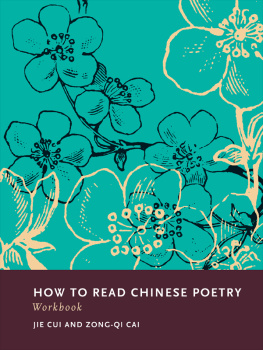
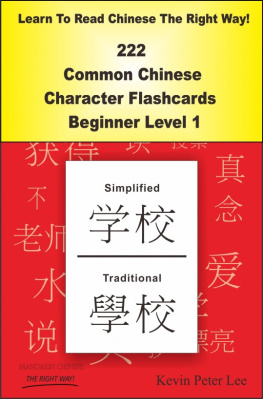
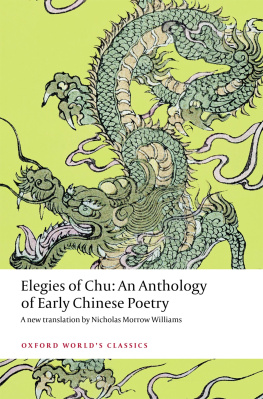
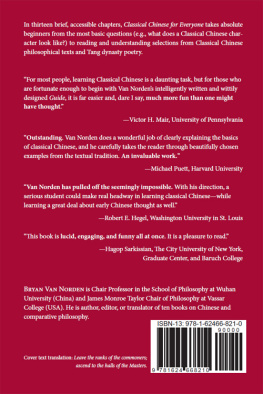

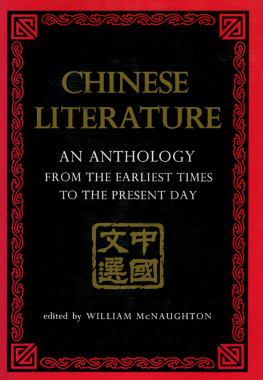
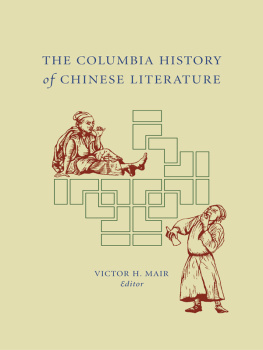
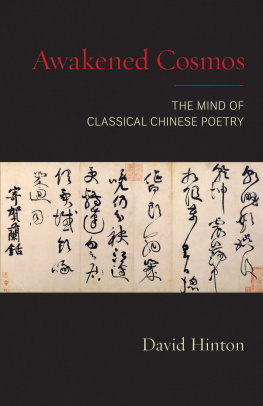
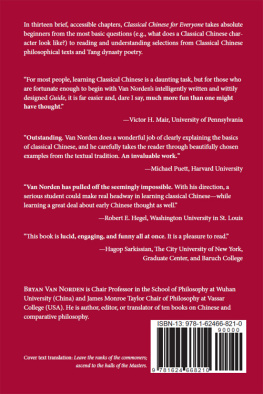

 New York
New York